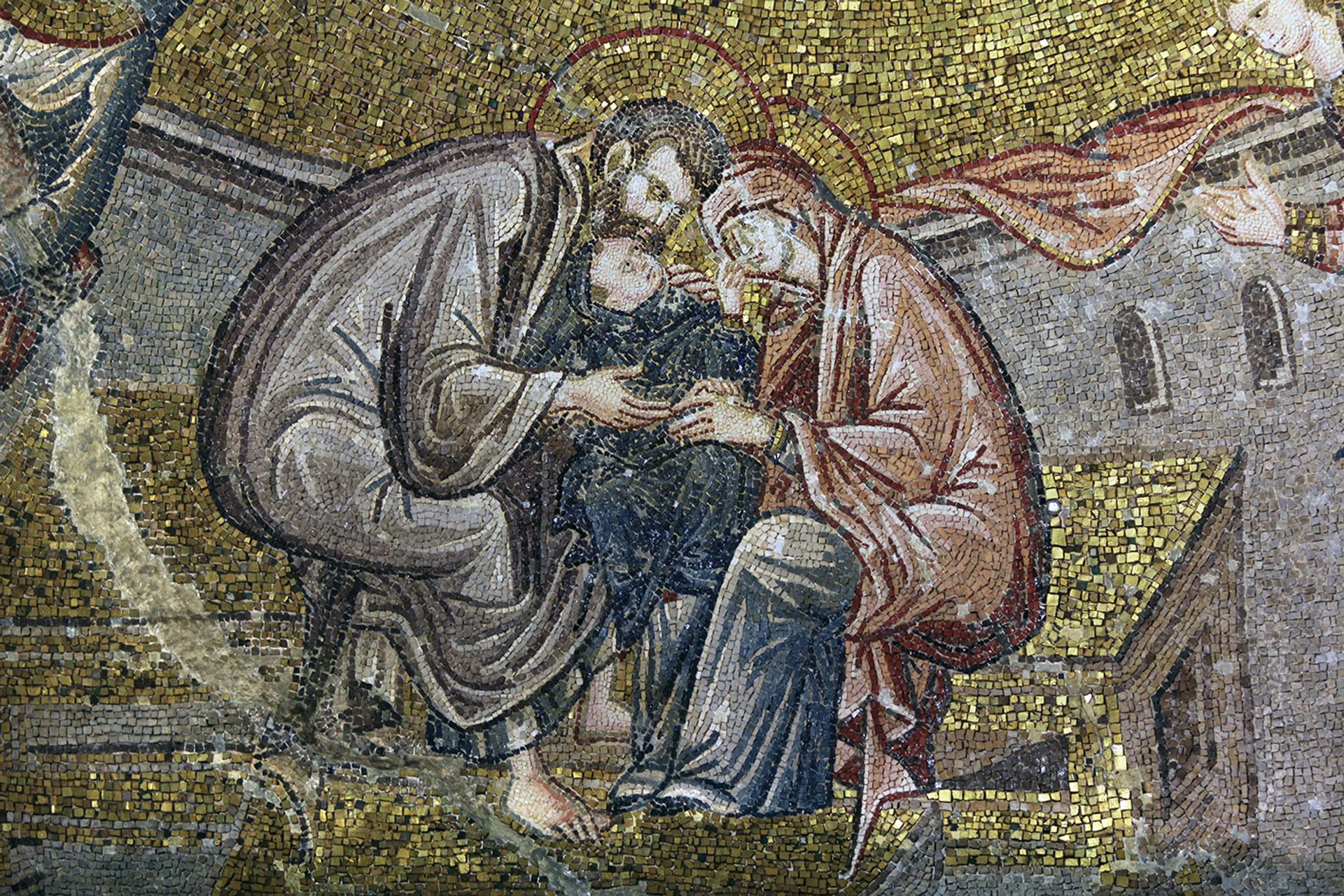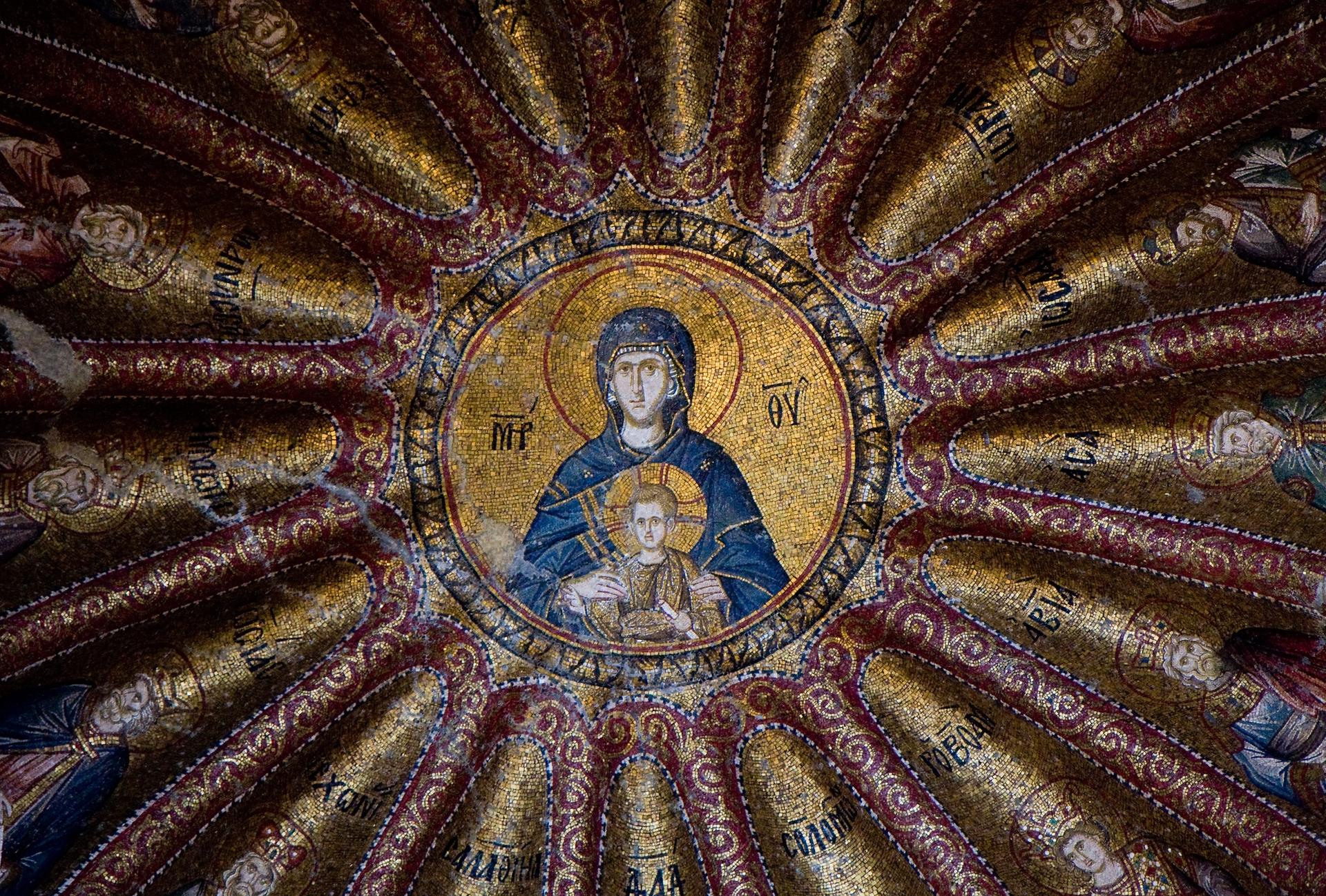Turkey reopens former Byzantine Chora church as a mosque amid muted objections
Turkey has reconsecrated a millennium-old former church as a mosque, shrugging off criticism from abroad that ending its neutral status as a World Heritage List-inscribed museum would harm cultural heritage, following a restoration that has left most of its medieval mosaics and frescoes visible.
The Church of St Saviour in Chora, often described as the Sistine Chapel of Istanbul, held its first Muslim prayers in nearly eight decades this week after President Recep Tayyip Erdoğan formally reopened the monument, called Kariye in Turkish. The site had been closed to the public since 2020 amid a decade-long rehabilitation that included restoring art, reinforcing the exterior and building modern visitor facilities in the gardens.
Unlike Turkey’s other recent conversions of former Orthodox churches into mosques, much of Chora’s devotional art has not been obscured to comply with Islamic tenets on the depiction of the human form. Mosaics and frescoes in the entrance halls and side chapel are unimpeded, but three images of the Virgin Mary and Christ inside the nave, which now serves as the men’s prayer space, are covered with curtains. A wooden pulpit, carpeting, bracketing and light fixtures have also been added in the nave.
The former monastery is home to the city’s most extensive Christian art, created in the 14th century before the dawn of the Renaissance. The site was made into a mosque around 50 years after the 1453 Ottoman conquest of Istanbul, then a museum in 1945 in a gesture to world heritage by the secular Turkish Republic.

The medieval mosaics and frescoes remain visible
A court in 2019 overturned the decree making Chora a museum, part of a campaign by Erdoğan’s Islamist-rooted government to turn Byzantine churches that served as mosques during the Ottoman period, but were deconsecrated as museums in the 20th century, back into Muslim houses of worship. Erdoğan has referred to the “right of conquest” to justify Islamic claims to the sixth-century Hagia Sophia, Christendom’s greatest cathedral before it became a mosque then a museum.
“These are exceptional historical monuments, which require continual expert monitoring and maintenance. When their museum status ceases, they no longer have the necessary conservation structures in place. The increased and largely unmonitored visitor access further accelerates the processes of decay,” says Tuğba Tanyeri-Erdemir, an architectural historian and religious heritage expert

Despite Islamic tenets on the depiction of the human form, the mosaics and frescoes in the entrance halls and side chapel are unimpeded
In 2020, Erdoğan led thousands in prayers at Hagia Sophia, sparking an outcry from Russia, the EU and the US, as well as from Pope Francis and Ecumenical Patriarch Bartholomew, the spiritual leader of the world’s Orthodox Christians whose seat is in Istanbul.
But the conversion of Chora on 6 May, which coincided with Easter Monday for the Orthodox faithful, drew less pomp and opprobrium. Erdoğan spoke in a televised speech from the capital Ankara marking the restoration of 200 historical sites. “May it bring good fortune,” he said as state bureaucrats cut a ceremonial ribbon outside of Chora via video link.
Erdoğan scrapped plans to pray in person at Chora in 2020 following a warning from UN cultural agency Unesco that unilateral changes to Chora and Hagia Sophia could impact their World Heritage standing. Unesco did not respond to requests for comment following this week’s opening.
Greek prime minister Kyriakos Mitsotakis told a Greek newspaper he will share his “strong dissatisfaction” when he meets Erdoğan next week, while the Greek Orthodox Archdiocese of New York said in a statement the change “is a contradiction in the agreement of of mutual respect and understanding between people of all religions” and urged Turkey to reconsider its decision.
“We encourage the Turkish government to preserve and ensure accessibility to the sites and buildings that have been home to different religious communities, in a way that respects their diverse history,” a US State Department spokesperson tells The Art Newspaper.
Conservationists have been alarmed by damage incurred at Hagia Sophia, including crumbling concrete and vandalism of objects, as thousands tread through the 1,500-year-old site each day. In January, the government reopened the upper gallery of mosaics for the first time to fee-paying tourists and restricted non-Muslims visiting the nave to manage crowds.
At Chora this week, a thin stream of tourists came to view sparkling mosaics, such as Christ in Majesty hovering from a dome, and the masterwork fresco Anastasis, or the Harrowing of Hell. Employees at the site said only about 100 worshippers are allowed at prayer times to prevent an overflow from the inner sanctuary.




